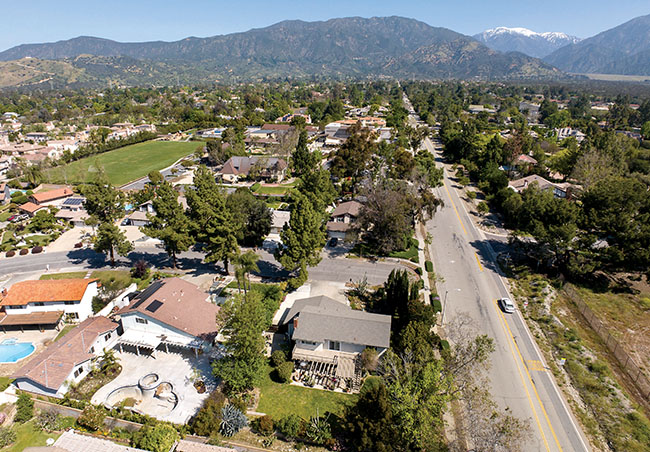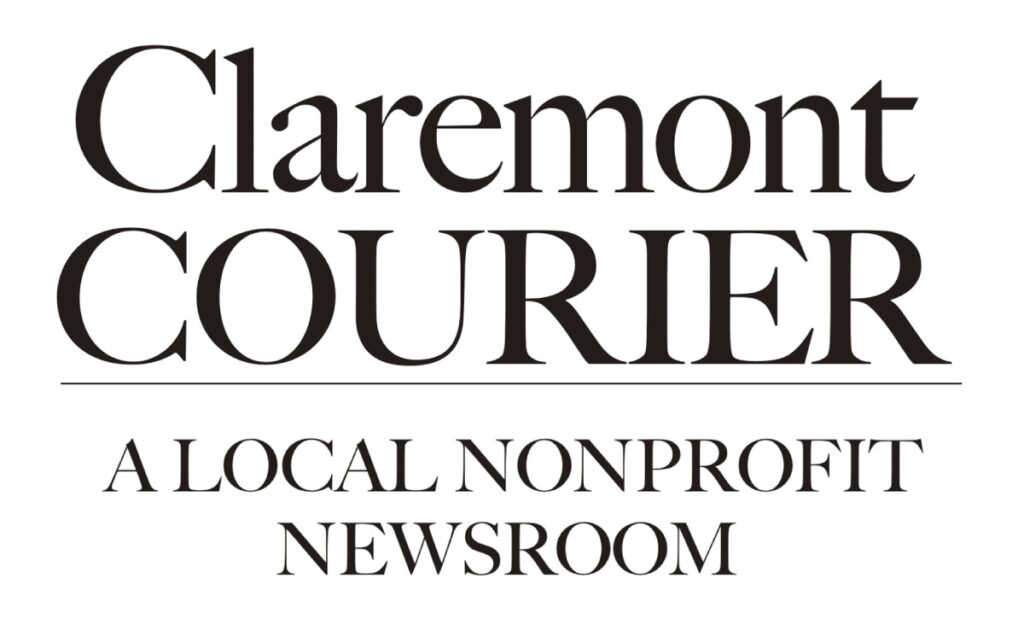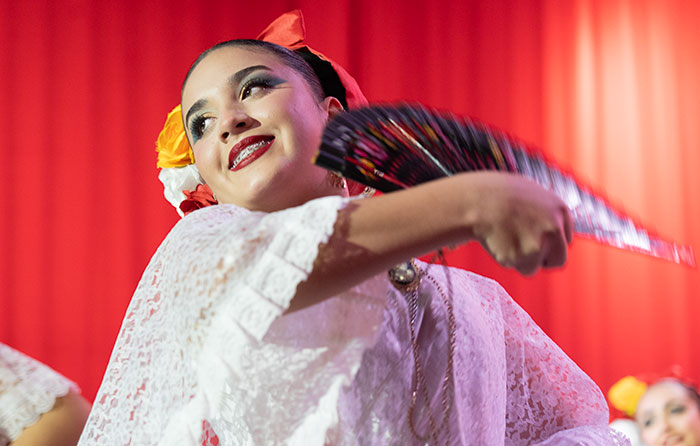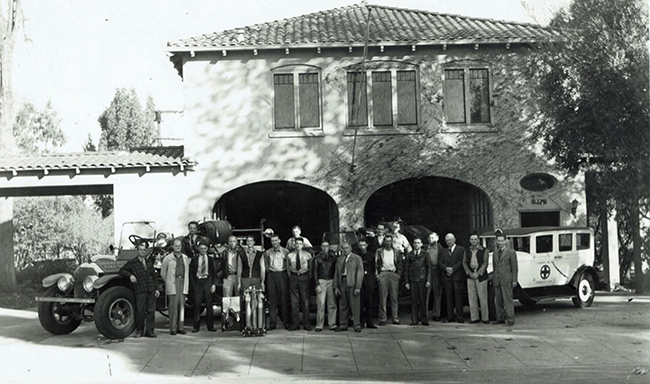WITNESS to HISTORY
by Mick Rhodes | mickrhodes@claremont-courier.com
While the world looked on in horror last Wednesday as the United States Capitol was breached by a violent, deadly mob, former Claremont resident and COURIER reporter Marc Rod was inside the building as the insurrection was underway. Mr. Rod, just 23, interned with the COURIER in 2018 and is now a reporter for Jewish Insider. While inside the Capital, he had little idea where to hide, or where the rioters were headed.
A normal start to the day
He arrived at the U.S. Capitol Building around 8:30 a.m. He noticed a few extra security patrols circling the building, and on the east side, facing the Supreme Court, a small group of protestors gathering. It wasn’t unlike the typical early morning scenes he’d been witnessing in the days leading up to January 6.
But with the House set that day to certify the states’ Electoral College votes, the heretofore perfunctory, largely ceremonial final task in a “normal” presidential election, emotions were expected to be running high.
“I’d heard from various people there was likely to be some sort of security incident on the Hill that day,” said Mr. Rod when he spoke to the COURIER on Tuesday. “They were expecting, obviously, very large crowds and large protests. So the Capitol Police were warning that there were probably going to be large protests and that people should be careful.”
Still, the morning scene wasn’t alarming.
“Honestly, people were pretty relaxed,” Mr. Rod said.
Most of the scores of Capitol Hill reporters were focused on the still-being-tallied results of the previous day’s key Georgia Senate races, and President Elect Joe Biden’s anticipated announcement of Merrick Garland as his nominee for attorney general.
“It was looking like the Electoral College vote count might not even end up being the biggest story of the day,” Mr. Rod said.
Over the next few hours things inside the building were quiet. Around 1 p.m. Mr. Rod watched from Statuary Hall as the procession carrying the boxes holding Electoral College votes went by from the Senate Chambers, on its way to the House. Some friends sent him texts telling him they’d seen him in the background of the live feed on CNN.
Throughout the day he began to notice swelling crowds outside the Capitol. It was at about 1:30 p.m. that he had his first indication that “something bad was going on.”
“I started hearing reports that there were evacuations going on in one of the Library of Congress buildings and one of the House buildings because of a suspicious package,” Mr. Rod said. “Lawmakers were being told to either shelter in place or go down and hide in the tunnels.”
(The first of at least 19 underground tunnels that connect people and vehicles to the many important government buildings, parking garages and even a subway stop at or near the Capitol were completed in 1800. They were largely rebuilt after British forces burned the Capitol, and the White House, in 1814 during The War of 1812. Most of the passages date back to the latter half of the 19th century.)
“I think that was the first indication for me and a lot of people that things were starting to turn a little bit south,” Mr. Rod said.
Few suspected the Capitol building would be breached.
Still though, the Capitol Police didn’t seem overly concerned, Mr. Rod observed. Around 2 p.m. he was walking by a window and saw that a few of the sections of a low fence outside the east side of the Capitol had been breached.
“I saw that portions of that had been broken through and saw that police were trying to move them back into place,” Mr. Rod said. “But then a lot of the people who were lined up along them starting shaking the fences, and then the whole thing came down.”
The crowds of mostly pro-Trump protestors began to stack up around the various entrances to the Capitol. Mr. Rod witnessed the intensity of the crowd increase, with people at the front of the building, more climbing the stairs behind them, and some perched atop police cars.
“There was a congressman who was standing next to me [whom Mr. Rod couldn’t identify definitively], and we were staring out the window, and he was just, ‘Oh my God.’ People were just shell-shocked at this point.”
Mr. Rod was alarmed, but said, “Even then I didn’t think they’d actually make it inside the building.”
To be safe, he made his way back to the Senate side of the building, figuring he would be better protected if he were near Vice President Mike Pence and his phalanx of Secret Service personnel.
“When I was coming back I heard a real loud banging or pounding, which I believe was the protesters pounding on the doors trying to get through,” Mr. Rod said. “The halls are pretty empty these days because of COVID, and it was just echoing all throughout the building. It was just pounding and pounding and pounding.”
Capitol security did seem to be more concerned at this point, Mr. Rod said.
“But I don’t think anybody really knew how things were going to go,” Mr. Rod said. “Nobody that I’d spoken to thought there was a possibly that anybody would be able to get inside the building. Everybody just assumed it’s one of the most secure buildings in the country.”
Then a sudden flurry of action.
“One of the police officers said, ‘Okay: everybody needs to go down to the tunnels right now. We’re moving,’” Mr. Rod said. “At this point my heart really starts pounding. I can feel it pounding in my chest. I can feel it pounding in my head.”
What followed were several minutes of chaos, during which, unsure of whom or what group had breached the Capitol, or their intent, he feared for his life. After all, over the last four years members of the press have routinely been branded “enemies of the people” by President Trump and his allies. Many have been threatened, some beaten, and the mob that stormed the Capitol had, unbeknownst to Mr. Rod, earlier carved “murder the media” into one the building’s doors.
Rioters breach the Capitol building
To get to the tunnels from where he was, Mr. Rod had to move down a set of stairs, then cross in front of an exterior door and through a lobby to a separate stairway that goes down into the tunnel.
“So, I just sprinted as fast as I could, no looking back, no looking down, just moving as fast as I could before anybody came in or in case somebody came in while that was happening. My concern was that for all I knew that [exterior] door could burst open while I was going past it.”
“That was probably the scariest part of it all because I had no idea at that point if the people were already inside the building,” Mr. Rod said. “I’m still not entirely sure they were inside the building at that point. They were not where I was, but for all I knew they could have been.”
Separated from his colleagues, he found himself alone in the labyrinth.
“There was no one around, there was no instruction,” Mr. Rod said. “I really had no idea what I was supposed to be doing, or where I was supposed to be going.”
He saw some maintenance workers locking
themselves in their offices. He then came across a pair of police officers.
“One of them was clutching her arm, and I heard her go into one of the side rooms and say, ‘Can you see where I’m bleeding from?’ And then I came across another one and I saw that his face was just totally red. I was initially thinking somebody had splashed paint on him or they got hit with pepper spray or something. And then as I got close to the guy I saw there was a big gash on his forehead and his face was just covered in blood, which was pretty shocking.”
Inside the tunnels
Searching for shelter amid the deserted tunnel system was anxiety inducing.
“There was nobody around. If there had been protestors or whatever you want to call them down there, and had I gotten injured, there would have been nobody who would have known that anything had happened to me,” Mr. Rod said. “So I was really trying to make sure that I got through there as fast as I could to get to somewhere where there were other people around.”
He found a group of staffers and press who had been locked down in the Longworth Building.
“So, at that point I was able to start to relax a little bit and say, ‘Okay there’s other people around, I’m somewhere where I’m supposed to be, I’m somewhere safe.’”
The group was moved to a nearby cafeteria, and for a few hours they holed up there, glued to the CNN feed on the television and obsessively checking Twitter for information from above ground.
Mr. Rod then saw the now widely viewed image of the police officers inside the House Chamber pointing their guns at the mob of rioters through the broken windows of a barricaded door.
“At that point I realized, either right as I was getting out or right after was when the protestors got in,” he said. “And I thought, ‘Oh my God. What has happened and what is going on? How is this happening?’ I was just stunned.”
He saw a group of police officers running by the cafeteria rolling a desk chair, sitting in which, he found out later, was apparently a congressman who had collapsed. Later, some injured Capitol Police made their way by the cafeteria, with one of the officers running in and asking if there was a nurse, doctor or anybody with medical training in the room.
“That was pretty dire, clearly, the fact that things had deteriorated that much where they’re just running around trying to find doctors,” Mr. Rod said. “It was obviously not a good sign.”
After a time, some of the House lawmakers who’d been in the Chamber when the rioters breached the doors made their way through the cafeteria on their way back to their offices. Mr. Rod did what reporters do, and started interviewing.
“People were just really stunned,” he said. “I think there was just a lot of shock. Obviously a lot of anger as well, but I think more than anything a lot of shock that this had even happened and things had gotten this far. I think they were still trying to process things.”
Mr. Rod spent the next few hours working on his Jewish Insider stories. Then, close to 8 p.m., word came down that the House was going back in session, getting on with the business of certifying the states’ electoral votes.
Mr. Rod and his colleagues were escorted back to the press gallery on the third floor of the House Chamber.
“It was actually kind of nice once the speeches started settling back into their usual rhythm, the almost monotony of it,” he said. “After everything that had happened throughout the course of the day, it sort of re-established a bit of normalcy.”
Sometime between 10 p.m. and midnight, he was allowed to leave the press gallery and again move freely throughout the Capitol building.
“In one place I saw there’d clearly been some kind of medical incident. There was a defibrillator that had been used for CPR, masks, and other medical equipment lying on the floor,” Mr. Rod said. “There were benches piled up, windows smashed in. I saw the door to the House Chamber where those few panes of glass had been knocked through. I was just walking around, taking everything in.”
He stayed on the job until 4 a.m., reporting on the final certification. It brought to an end a process that had been marred by the most unprecedented violence and insurrection to have occurred at the Capitol in modern history.
“It’s been a fantastic experience, this notwithstanding,” Mr. Rod said on Tuesday. “I’m just really glad I’m able to be here for this, and to be able to cover this and get the information out, and ask these lawmakers the questions that need to be asked.
“So, as much as I was scared by what happened last Wednesday, I’m not deterred in being back here and doing my job and doing what needs to be done. This is why I’m here. Things like Wednesday are why reporters are important, because we need to be there to get the information out so people know what’s going on when the very seat of our government is under siege.
“It’s an honor and a privilege to be able to do the work I do.”
We at the COURIER are proud of Marc, the local work he did for us, and the national work he’s now doing for his readers at Jewish Insider.










0 Comments